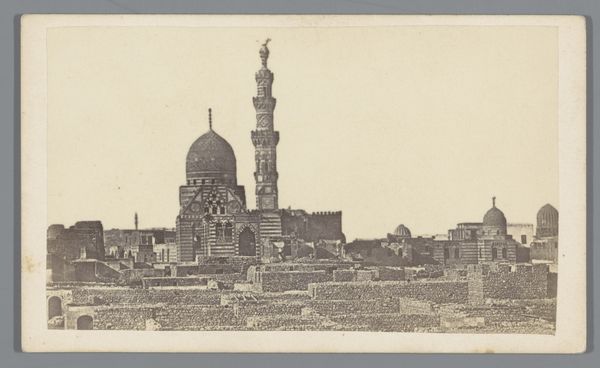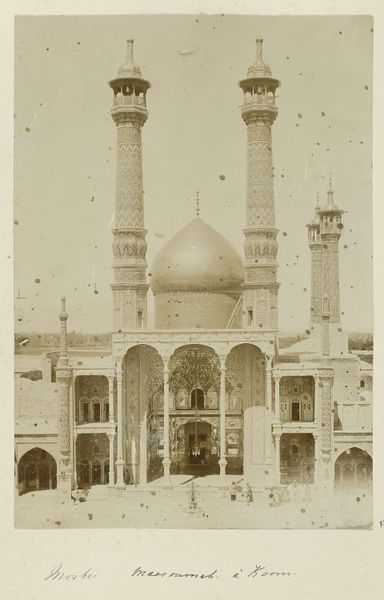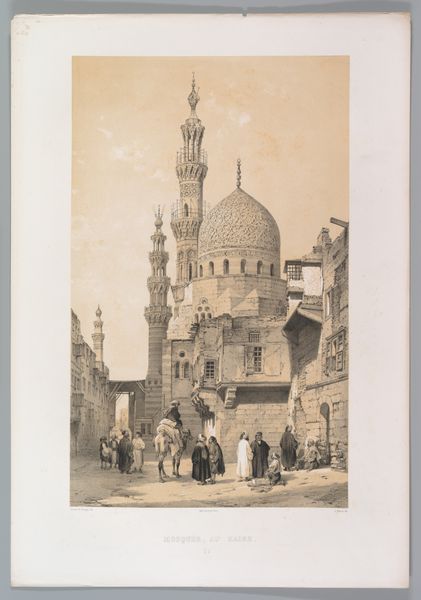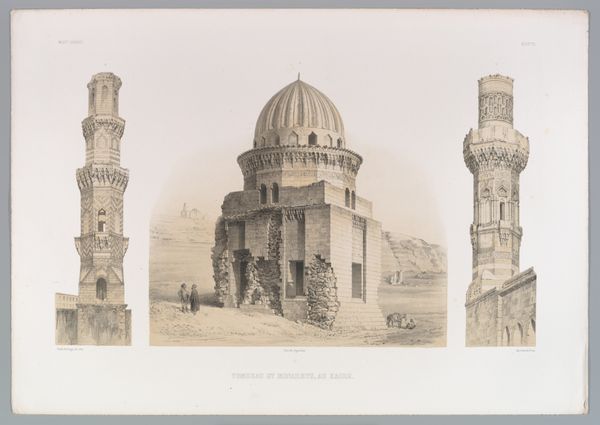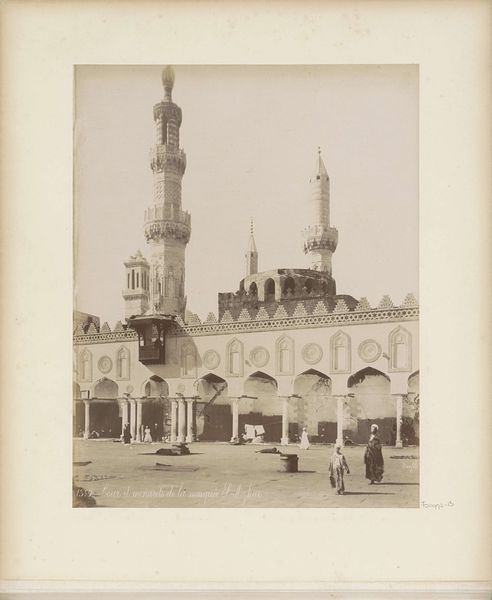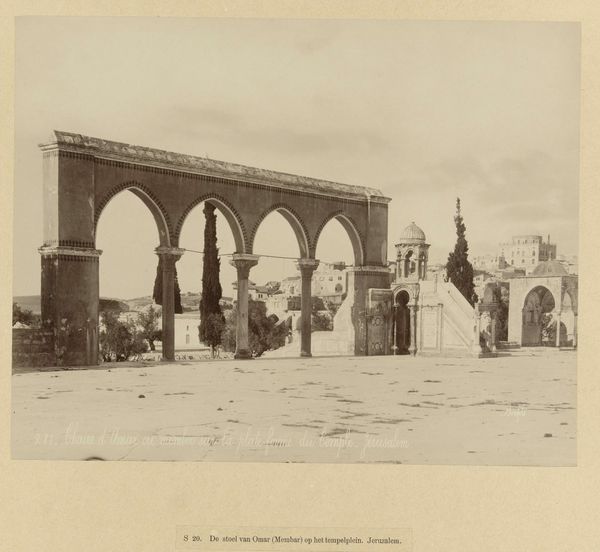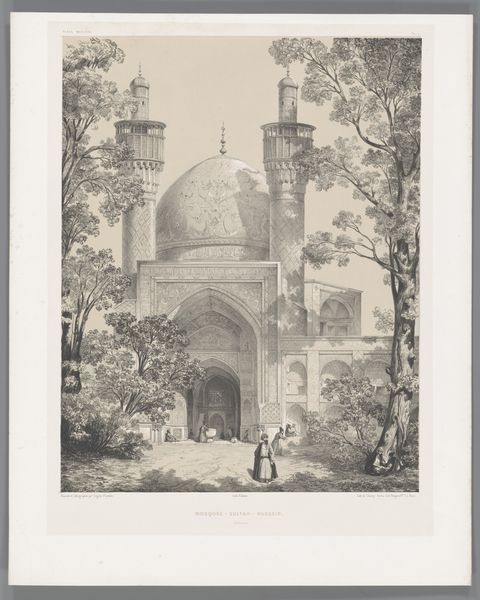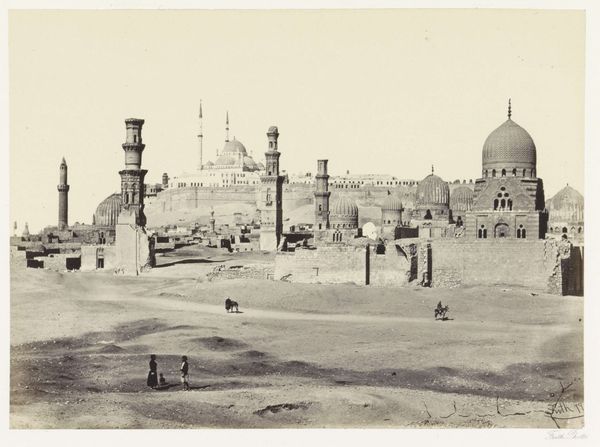
drawing, paper, ink, engraving, architecture
#
drawing
#
historical design
#
landscape
#
paper
#
ink
#
cityscape
#
islamic-art
#
engraving
#
architecture
Dimensions: height 401 mm, width 543 mm
Copyright: Rijks Museum: Open Domain
Editor: This drawing, "Binnenplein van de Vrijdagmoskee van Isfahan," by Eugène Flandin, made between 1843 and 1854 using ink and engraving, has a peaceful, almost solemn feel. It's interesting how he captured such grandeur with these materials. How do you read this piece, particularly considering its historical context? Curator: This piece is more than just a cityscape; it’s a document reflecting a specific colonial gaze upon Islamic architecture. Flandin, a French Orientalist painter, wasn’t simply recording what he saw, but interpreting it for a European audience hungry for exotic representations of the East. Consider how the architecture itself becomes a symbol of power, both in its original cultural context and within the frame of colonial discourse. Do you see how the artist emphasizes the vastness and the perceived emptiness? Editor: Yes, it feels like the people are almost secondary, dwarfed by the architecture. Curator: Precisely! This underrepresentation resonates with a broader power dynamic. It invites us to question: whose story is being told and from what perspective? The romanticism inherent in Orientalist art often overlooks the lived realities and complexities of the people inhabiting these spaces. What do you make of the lack of vibrancy often associated with such places? Editor: That's a compelling point. I hadn’t considered how the very act of documentation could be an act of interpretation, filtered through colonial biases. Curator: Thinking critically about such imagery enables us to understand how Western perceptions have shaped, and continue to shape, our understanding of different cultures. Editor: I see the drawing in a new light now. It makes me want to seek out Iranian artists depicting their own sacred spaces. Curator: Exactly. Decentering the dominant narrative allows a more inclusive and truthful engagement with art history.
Comments
No comments
Be the first to comment and join the conversation on the ultimate creative platform.




